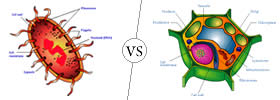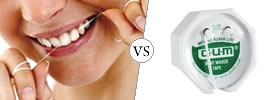Difference between Diagnosis and Treatment
Key Difference: Diagnosis is the act of identifying the illness or disease by analyzing and examining the associated symptoms. Treatment is an umbrella term which is used to denote all the methods applied in order to cure the diagnosed ailment or reduce the effects generated by the disease or disorder. An accurate diagnosis leads to an effective treatment.
.jpg) Diagnosis is the act of identifying the illness or disease by analyzing and examining the associated symptoms. Diagnosis must be determined by only qualified medical professionals like doctors and physicians. They tend to recognize the disease by signs and symptoms. Medical tests like blood tests, biopsy, stool samples, urine tests, etc., are often carried out in order to diagnose the disease or illness.
Diagnosis is the act of identifying the illness or disease by analyzing and examining the associated symptoms. Diagnosis must be determined by only qualified medical professionals like doctors and physicians. They tend to recognize the disease by signs and symptoms. Medical tests like blood tests, biopsy, stool samples, urine tests, etc., are often carried out in order to diagnose the disease or illness.
Differential Diagnosis is one of the common types of diagnosis. It is based on the process of elimination. After carrying out the investigations of symptoms the doctor eliminates the unlikely diseases, and is left out with the option of most likely disease. Methods of diagnosis generally include physical examination, complete medical history of symptoms and travel, and a range of tests.
 Treatment is an umbrella term which is used to denote all the methods applied in order to cure the diagnosed ailment or reduce the effects generated by the disease or disorder.
Treatment is an umbrella term which is used to denote all the methods applied in order to cure the diagnosed ailment or reduce the effects generated by the disease or disorder.
Treatment is generally associated with the medical care provided to the patients. Treatment involves various types of techniques; however the most common ones include application of medicines, surgery, physiotherapy etc. to a patient regarding a disease or its symptoms.
There is a strong relationship between diagnosis and treatment because after identifying the nature of the condition or diagnosis, the treatment starts, in which it is tried to treat the causes, related to that condition or at least lessen its harmful results.
Comparison between Diagnosis and Treatment:
|
|
Diagnosis |
Treatment |
|
Definition |
It refers to the identification of a disease or a disorder. The symptoms are used to identify the disease or disorder. |
Treatment refers to the medical care provided to the patients |
|
Process |
The symptoms and signs are analyzed and then the investigation is done in order to reach the results. It is basically the name of the disease or disorder. Medical tests for diagnosis include tests like blood tests, biopsy, stool samples, urine tests. |
Treatment involves various types of techniques, however the most common ones include application of medicines, surgery, physiotherapy etc. |
|
Order of precedence |
Diagnosis must be done before starting the treatment |
It is done after the diagnosis |
|
Condition |
Places a name or label on a person’s medical condition |
Treat the cause or symptoms of medical condition, or lessen the effects |
|
Example |
Diagnosis of Malaria is done by using tests like microscopy and rapid diagnostic test. Microscopy of stained thick and thin blood smears are looked as the good standard for confirmation of diagnosis of malaria. Rapid Diagnostic Test are based on the detection of circulating parasite antigens. |
Drugs like chloroquine, mefloquine, primaquine, quinine, pyrimethamine-sulfadoxine (Fansidar), and doxycycline are used in the treatment of Malaria. |
|
Word Origin |
Greek, from diagignōskein 'distinguish, discern' |
Latin tractāre to drag, handle, treat + Latin -mentum, suffix used for denoting an action or resulting state |
Image Courtesy: cdc.gov, ninajankowicz.com









Add new comment